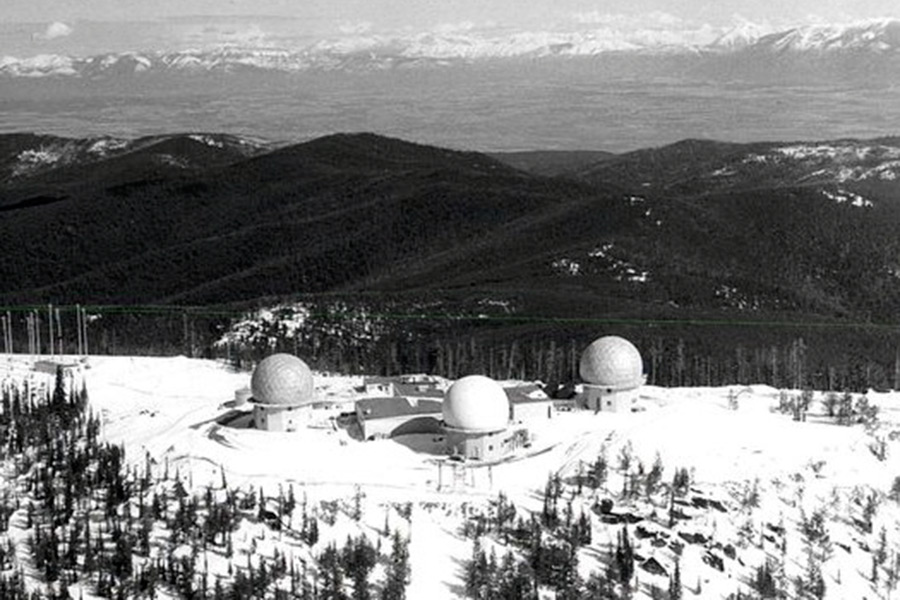Keeping an Eye on the Sky in Lakeside
Members of the 716 Radar Squadron hold reunion at former military base
By Justin Franz
LAKESIDE – One day in the late 1960s, Jay Youngbluth and his colleagues at the Kalispell Air Force Station in Lakeside noticed a suspicious symbol floating across the radar screen. While the radar usually featured crosses and circles representing various types of military and civilian aircraft in the sky above Northwest Montana, now there was an arrow.
Youngbluth knew it meant one of two things: it was either an incoming missile or Air Force One.
“I don’t think it was an incoming missile,” Youngbluth recalled last week. “I feel like we probably would have heard about that.”
Youngbluth and other veterans from the U.S. Air Force’s 716th Radar Squadron gathered in Lakeside on July 22-23 for a reunion at Youth with a Mission Montana, which now calls the old radar base near downtown Lakeside home. About 30 former airmen and their families gathered to share stories and memories of the military radar facility that operated atop Blacktail Mountain at the height of the Cold War between 1959 and 1978.
The radar facility was one of dozens across the country that was constructed in the years after World War II to protect the homeland from invasion by the Soviet Union. Other radar facilities were built in Cut Bank, Lewistown and Havre. One even operated briefly in the remote Yaak in the early 1950s, before being downgraded to an unmanned radar facility. The Dirty Shame, a popular watering hole today in the town of Yaak, was built just outside the defunct facility’s front gate.
The radar was constructed in 1959, and a small base was built not far from the shores of Flathead Lake to house the 120 airmen needed to keep the site operational. The base featured barracks, a mess hall, officers’ quarters, a recreational hall and a bowling alley.
“This was a pretty standard radar site of the era, except of course that there was a beautiful lake nearby with fantastic fishing and great hunting, too,” said Earl Schroeder, who worked on the base in 1961 and 1962 as a radar operator. “It was the best radar site in the nation. A lot of people will say they worked at the best sites but there was nothing like this one.”
Three times a day, radar operators and computer technicians met in the mess hall to eat a meal before piling into a bus for the 14-mile ride up to the mountain. There they would keep a close eye on the radar and record everything they saw. Technicians, like Youngbluth, maintained the complex computers that took information from Blacktail and sent it to Malmstrom Air Force Base in Great Falls.
Hank Miller worked at the site in 1961 and 1962 and said for the most part his time there was calm and uneventful. The only time tensions rose at the site was during the failed Bay of Pigs Invasion and the Cuban Missile Crisis when additional security was present.
“They actually put a guard in the guard shack,” he laughed.
In 2011, Youngbluth and some other 716th Radar Squadron veterans decided to get together for a reunion. It was so successful they decided to hold another one this year. A plaque telling the story of the radar squadron was dedicated at a ceremony on July 22, and the weekend was a chance to get together to remember the days when the U.S. Air Force kept a close eye on the sky above Lakeside.
“The memories of this place sparkle in my mind,” Schroeder said. “If you came to this base with a bad attitude, you left with a good one. And if you came here with a good attitude, you left with a great one.”